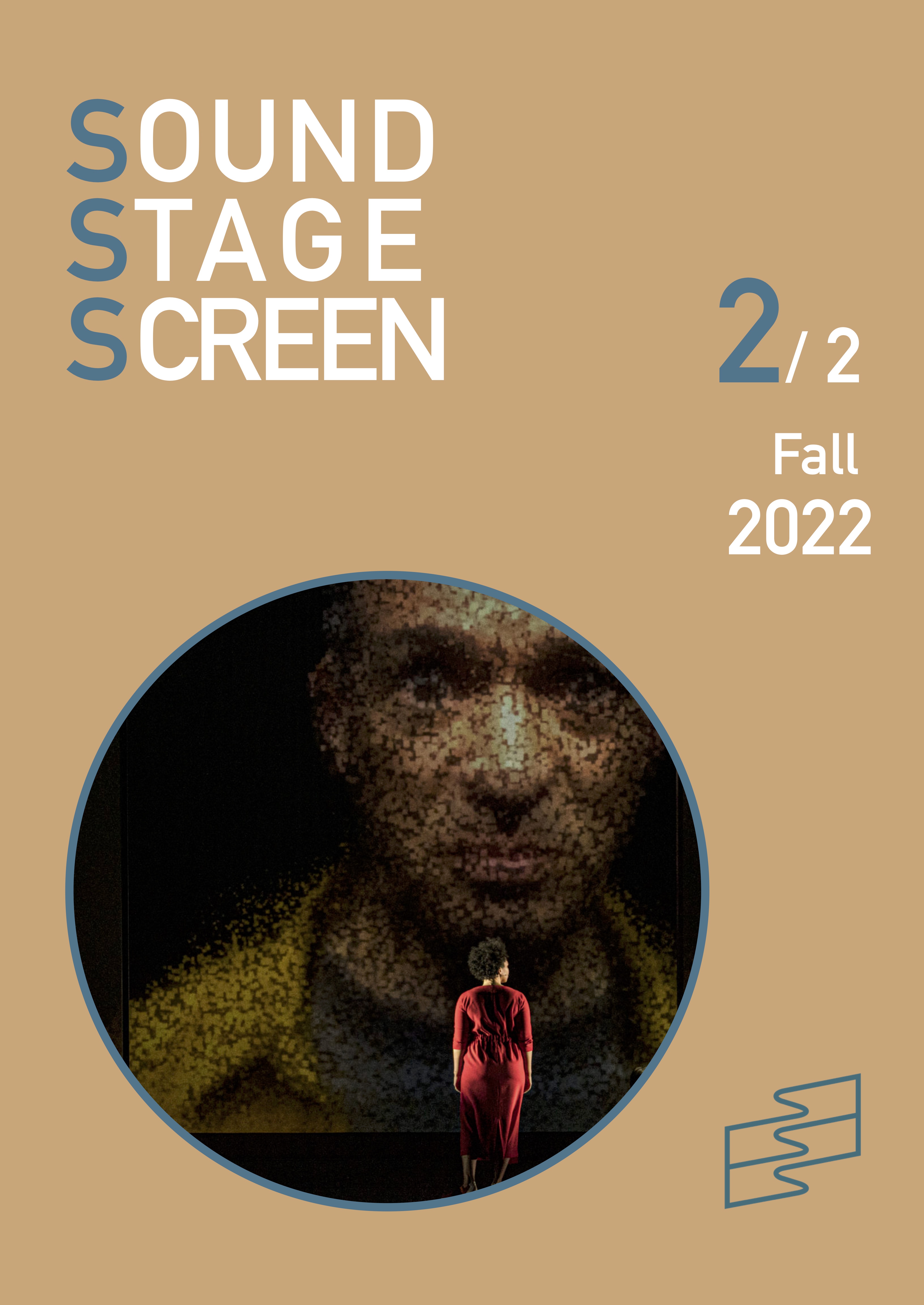Abstract
While romantic love is a central topic in most Disney films, love duets sung by the featured couple are relatively rare and solo songs sung by the male protagonist even rarer. The combination of masculinity and the musical expression of romantic feelings seems thus to pose a challenge. In order to understand the complexity of romantic masculinity in Disney movies it makes sense to consider an aspect that has so far been left unconsidered: the male singing voice. This article conducts a comparative analysis of the love duets “A Whole New World” from Aladdin (1992) and “I See the Light” from Tangled (2010), as well as the solo love songs “Lost in the Woods” from Frozen II (2019) and “Heaven’s Light” from The Hunchback of Notre Dame (1996). It focuses on three central questions: (1) whether various models of romantic masculinity are mirrored in specific stylistic musical or vocal devices; (2) how these connections relate to the longstanding tradition of voice categories (Stimmfach) in opera; and (3) in which ways the music and especially the singing comment on or even contradict the portrayed masculinity. By discussing the male lead as a musical character, the article offers a new perspective on Disney’s (re)interpretation of romantic masculinity.
References
Bibliography
Alberti, John. Masculinity in the Contemporary Romantic Comedy: Gender as Genre. New York: Routledge, 2013.
Åström, Berit. The Absent Mother in the Cultural Imagination: Missing, Presumed Dead. Cham: Springer International Publishing, 2017.
Béres, Laura. “Beauty and the Beast: The Romanticization of Abuse in Popular Culture.” European Journal of Cultural Studies 2, no. 2 (1999): 191–207.
Biddle, Ian, and Freya Jarman-Ivens. “Introduction: Oh Boy! Making Masculinity in Popular Music.” In Oh Boy! Masculinities and Popular Music, edited by Freya Jarman-Ivens, 1–17. New York: Routledge, 2007.
Bridges, Tristan, and C. J. Pascoe. “Hybrid Masculinities: New Directions in the Sociology of Men and Masculinities.” Sociology Compass 8, no. 3 (2014): 246-58.
Cooper, Kim, and David Smay, eds. Bubblegum Music is the Naked Truth. Los Angeles: Feral House, 2001.
Coyne, Sarah, Jennifer Ruh Linder, Eric E. Rasmussen, David A. Nelson, and Victoria Birkbeck. “Pretty as a Princess: Longitudinal Effects of Engagement with Disney Princesses on Gender Stereotypes, Body Esteem, and Prosocial Behavior in Children.” Child Development 87, no. 6 (2016): 1909–25.
Davis, Amy M. Good Girls & Wicked Witches: Women in Disney’s Feature Animation. New Barnet: John Libbey Publishing, 2007.
Davis, Amy M. Handsome Heroes & Vile Villains: Men in Disney’s Feature Animation. Bloomington: Indiana University Press, 2013.
de Giere, Carol. Defying Gravity: The Creative Career of Stephen Schwartz, from “Godspell” to “Wicked.” Milwaukee: Applause Theatre Books, 2008.
Fleeger, Jennifer. Mismatched Women: The Siren’s Song Through the Machine. New York: Oxford University Press, 2014.
Frith, Simon, and Angela McRobbie. “Rock and Sexuality.” In On Record: Rock, Pop, and the Written Word. Edited by Simon Frith and Andrew Goodwin, 371–89. London: Routledge, 1990.
Gregory, Georgina. Boy Bands and the Performance of Pop Masculinity. New York: Routledge, 2019.
Harrison, Scott D., Graham F. Welch, and Adam Adler. “Men, Boys and Singing.” In Perspectives on Males and Singing, edited by Scott D. Harrison, Graham F. Welch, and Adam Adler, 3–12. Dordrecht: Springer, 2012.
Hine, Benjamin, Dawn England, Katie Lopreore, Elizabeth Skora Horgan, and Lisa Hartwell. “The Rise of the Androgynous Princess: Examining Representations of Gender in Prince and Princess Characters of Disney Movies Released 2009–2016.” Social Sciences 7, no. 12 (2018): 245.
Hischak, Thomas S. Disney Voice Actors: A Biographical Dictionary. Jefferson: McFarland, 2011.
Kloiber, Rudolf. Handbuch der Oper. Regensburg: Gustav Bosse, 1951.
Laird, Paul R. The Musical Theater of Stephen Schwartz: From “Godspell” to “Wicked” and Beyond. Lanham, Maryland: Rowman & Littlefield Publishers, 2014.
Liessmann, Konrad Paul. Kitsch oder warum der schlechte Geschmack der eigentlich gute ist. Wien: Brandstätter, 2002.
Macaluso, Michael. “Postfeminist Masculinity: The New Disney Norm?” Social Sciences 7, no. 11 (2018): 221.
McCracken, Allison. Real Men Don’t Sing: Crooning in American Culture. Durham, NC: Duke University Press, 2015.
McGinnis, Paul Yeadon. The Opera Singer’s Career Guide: Understanding the European Fach System. London: Scarecrow Pres, 2010.
Palmer-Mehta, Valerie. “Men Behaving Badly: Mediocre Masculinity and The Man Show.” Journal of Popular Culture 42, no. 6 (2009): 1053–72.
Perea, Katia. “Touching Queerness in Disney Films Dumbo and Lilo & Stitch” Social Sciences 7, no. 11 (2018): 225.
Potgieter, Liske, and Zelda Potgieter. “Deconstructing Disney’s Divas: A Critique of the Singing Princess as Filmic Trope.” Acta Academica 48, no. 2 (2016): 48–75.
Seedorf, Thomas. “Stimmfach / Stimmfächer.” In Ann-Christine Mecke, Martin Pfleiderer, Bernhard Richter, and Thomas Seedorf, eds. Lexikon der Gesangsstimme: Geschichte, wissenschaftliche Grundlagen, Gesangstechniken, Interpreten. 2nd rev. ed., 587–91. Laaber: Laaber, 2018.
Steinhoff, Heike. “‘Let It Go’? Re-Inventing the Disney Fairy Tale in Frozen.” In Heroes, Heroines, and Everything in Between: Challenging Gender and Sexuality Stereotypes in Children’s Entertainment Media, edited by CarrieLynn D. Reinhard and Christopher J. Olson, 159–76. Lanham: Lexington Books, 2017.
Talbot, Mary. Language and Gender: An Introduction. 2nd ed. Cambridge: Polity Press, 2010.
Tanner, Litsa Renée, Shelley A. Haddoch, Toni Schindler Zimmerman, and Lori K. Lund. “Images of Couples and Families in Disney Feature-Length Animated Films.” The American Journal of Family Therapy 31, no. 5 (2003): 355–73.
Tasker, Yvonne, and Diane Negra. “Introduction: Feminist Politics and Postfeminist Culture.” In Interrogating Postfeminism: Gender and the Politics of Popular Culture. Edited by Yvonne Tasker and Diane Negra, 1–25. Durham: Duke University Press, 2007.
Xu, Yi, Albert Lee, Wing-Li Wu, Xuan Liu, and Peter Birkholz. “Human Vocal Attractiveness as Signaled by Body Size Projection.” Plos One 8, no. 4 (2013): e62397.
Zimdars, Melissa. “Having It Both Ways: Two and a Half Men, Entourage, and Televising Post-Feminist Masculinity.” Feminist Media Studies 18, no. 2 (2018): 278–93.

This work is licensed under a Creative Commons Attribution-ShareAlike 4.0 International License.
Copyright (c) 2022 Maria Behrendt

